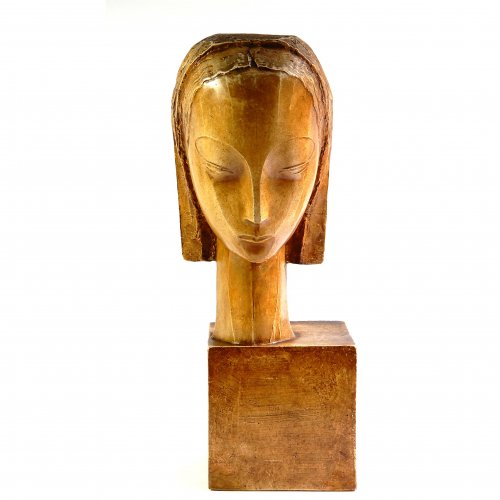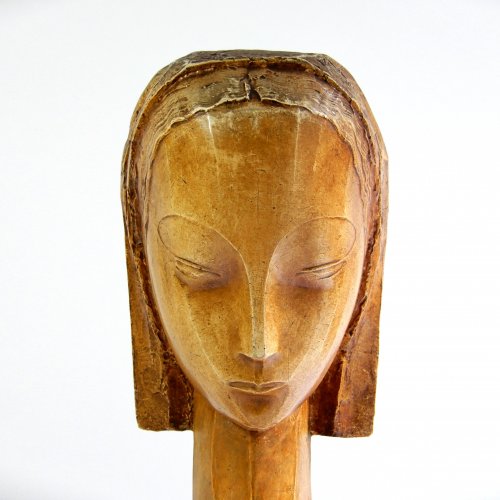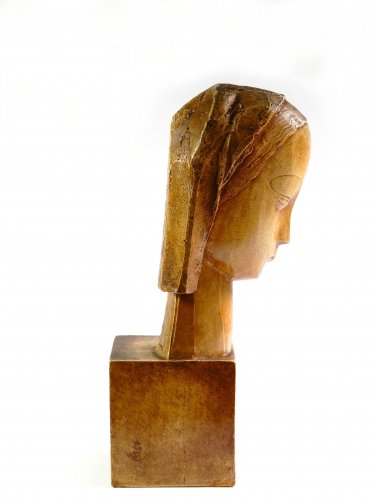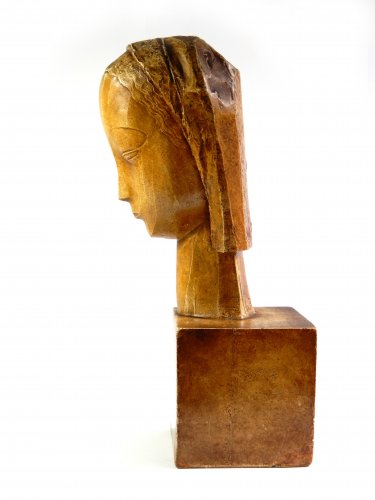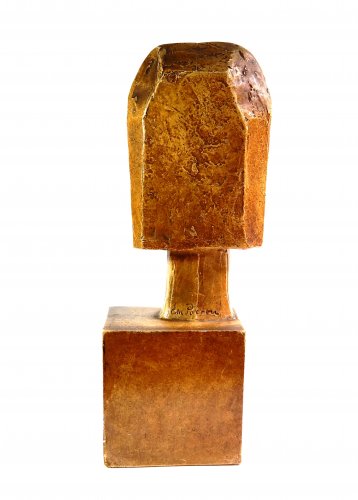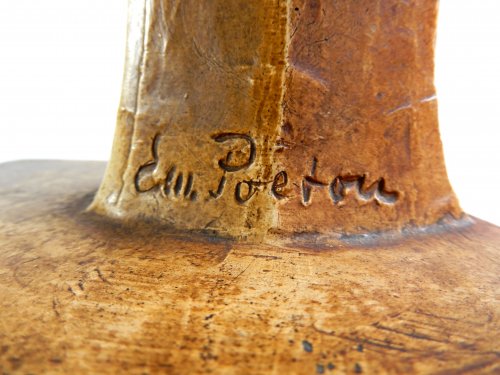Emiel Poetou (1885-1975) Bust of a young woman
About this piece
This head of a young woman is beautiful, she such a nice expression, but is also humble, while she has a huge powerful aura.
This head was made around 1926 by the Belgian sculptor Emiel Poetou (1885-1975).
He was a somewhat solitary artist who went his own way and at the time was very progressive in his way of working.
His images are stylistically very strong, it is clearly noticeable that his work is influenced by cubism and expressionism.
This head is made of plaster and the head has a light brown patina. (the colour is a bit lighter than the photos. As far as we know, this head has never been cast in bronze.
The sculpture is signed in the neck with "Em. Poetou".
Provenance:
- Walloon private collection.
- Gallery De Vuyst.
Biography:
Emiel François Poetou (Ghent, 1885-1975 Drongen), sculptor.
Emiel Poetou grew up in Ghent, he attended evening school (drawing and modelling), then he studied at the Academy of Fine Arts in Ghent and Brussels. He was a pupil of Jean Delvin, Jules and Louis van Biesbroeck in Ghent and in Brussels with Charles Van der Stappen and Victor Rouseau. His fellow students were Leon Sarteel, Geo Verbanck and Domien Ingels.
In 1912 he received the quadrennial prize for sculpture.
In 1927 he decided to devote himself completely to his art and was influenced by the Avant-Gardist movements in the line of Zadkine, Archipenko and Brancusi.
In the 1920s he made expressionist nudes, madonna's and heads. From 1922 his work became more monumental. In the 1930s he also made various portrait heads in his own characteristic way.
After the 1930s his work became more and more abstract, in the 1950s his works showed a kinship with Jean Arp and Henry Moore. His nudes got round shapes and winding lines, his choice of materials also changed, for example he sprayed various works with car paint, but also used polyester for his shapes. Halfway through the years he also started making animal sculptures and plaster reliefs of flowers and leaves. Totally different work, by the way.
After his 85th birthday he started to work constructively again and also still had exhibitions. He was someone who was constantly looking for a different, innovative design language and innovative techniques.
Emiel Poetou has also designed coat of arms and medals, the coat of arms of the Ghent University is his hand.
Literature:
-Jean-François Blet, Emiel de Block, Yves de Smet;
"Emiel Poetou, Gent 1885 - Drongen 1975", Editeur Norbert Poulain, Interbellum, Gent, 1986. A photo of this sculpture is on page 51.
- "De Vlaamsche beeldhouwer Emiel Poetou" by Paul de Keyser for Elseviers geïllustreerd weekblad, jaargang 39 (1929).
-Mieke
Marx en Cor Engelen; "Beeldhouwkunst in België, vanaf 1830" Lexicon in 3 volumes, Studia, Algemeen Rijksarchief Brussel, 2002.
Volume II, p. 1294-1295.
Condition
Overall good condition, especially considering the age. A few spots have been retouched.
Material:
Plaster
Measurements:
Width: 24 cm
(9,45")
Height: 47,5 cm
(18,7")
Depth: 20 cm
(7,87")
Year:
approximately 1926
Origin:
Belgium
Artist / atelier:
Emiel Poetou,
